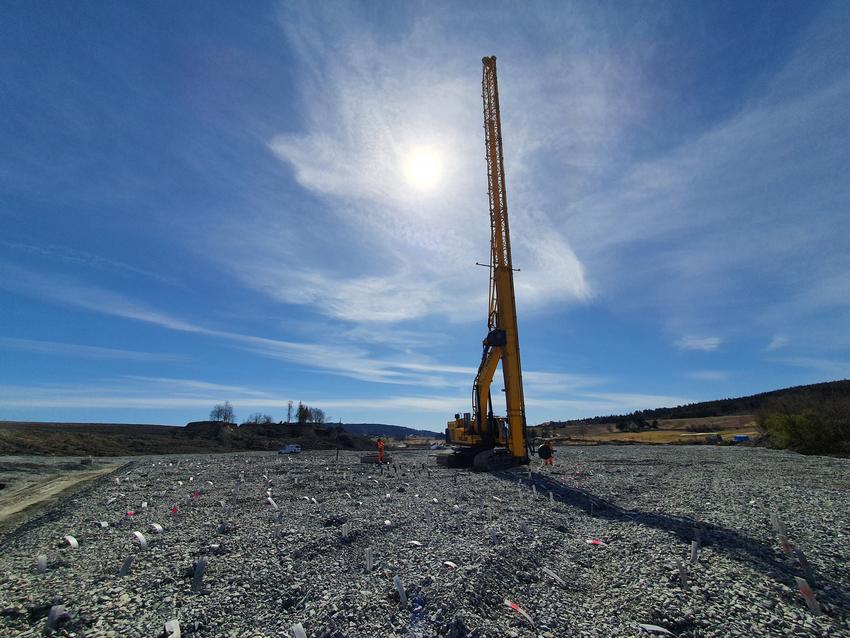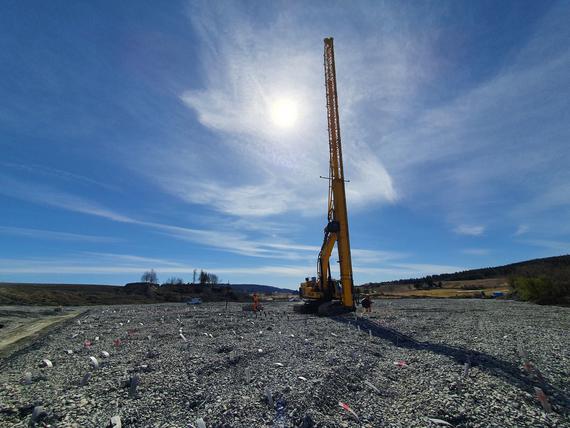Keller installed about 17 500 pcs of vertical drains with a total installation length of about 250 000 m. All drains were installed with Keller's own vertical drain machine. Due to a very low shear strength in the clay, it was necessary to use a water system to be able to anchor the drains in the ground.

The project
In Desember 2020, a large quick clay landslide occurred in a residential area in Gjerdrum. The landslide had an estimated size of about 1,1 million m3. NVE got the responsibility to secure the landslide area and stabilize the ground for future use. It was decided to use vertical drains to stabilize the remaining clay in the area. Keller was contracted by NVE to execute the works.
The challenge
The main challenge in the project was that the ground was extremely soft, which made it difficult to get the large machines out in the area and to be able to anchor the anchor plates of the vertical drains in the ground.
The solution
The solution to stabilize the ground in the landslide was to use vertical drains. Before the works could start, a 1 m thick working platform was established over the whole area to be able to drive the machines in. Then the vertical drains was installed in a predefined grid over the whole area. Vertical drains, or also known as wick drains, are used to shorten the dissipation path of the excess pore water and to accelerate the consolidation process to a few months instead of many years. The drains consists of a plastic core, which can lead the water, surrounded by a filter cloth. The drains were installed to bedrock and a thick layer of heavy soil/rocks was filled over to consolidate the ground. The extra load combined with the drains will drain out the excess pore water from the clay.
